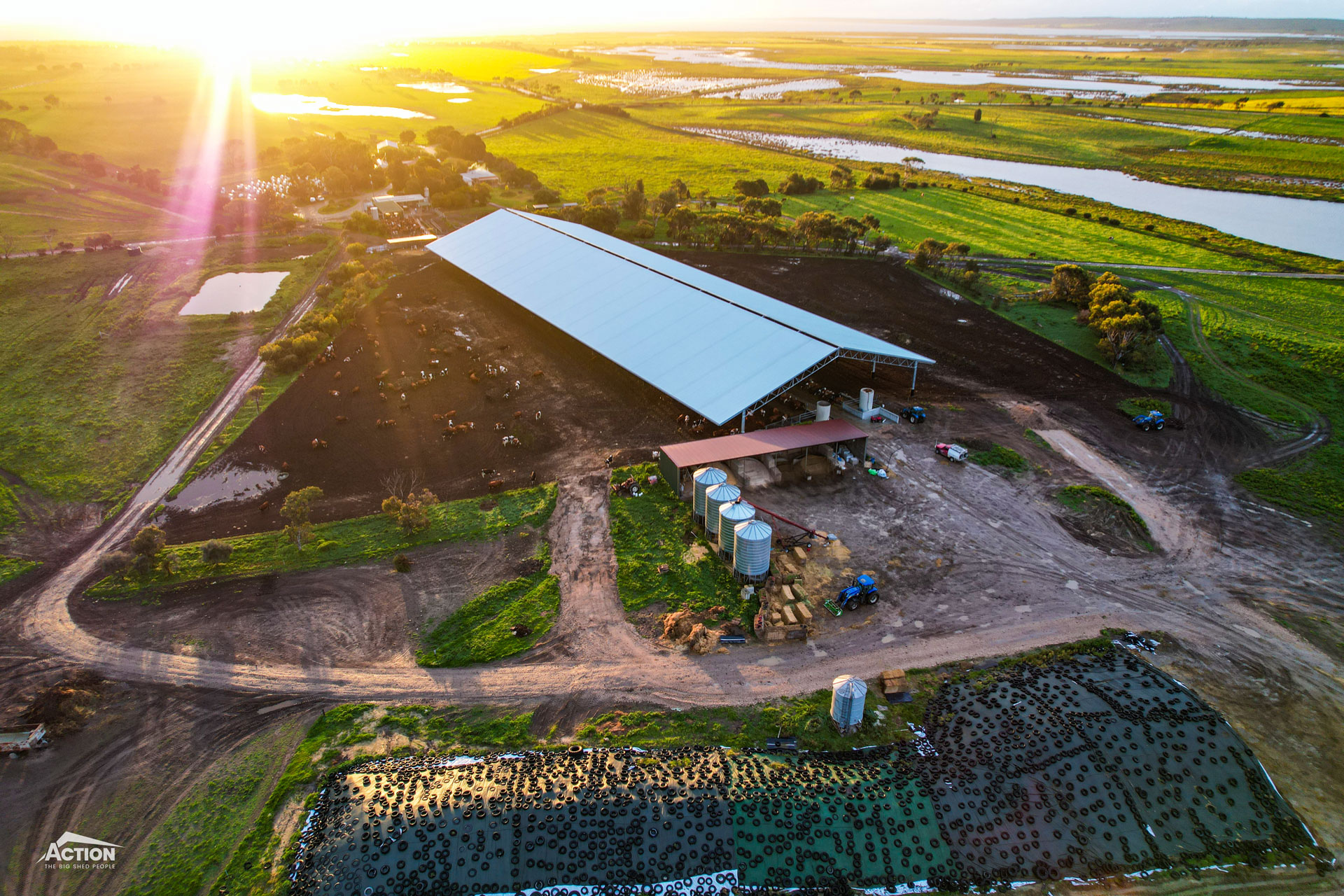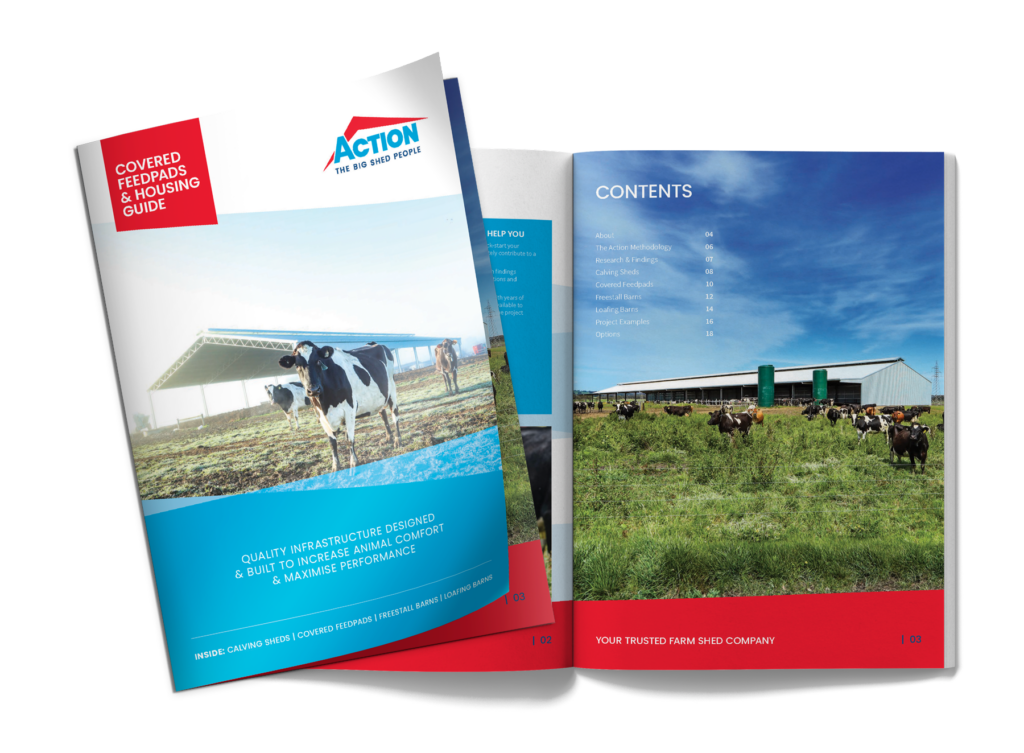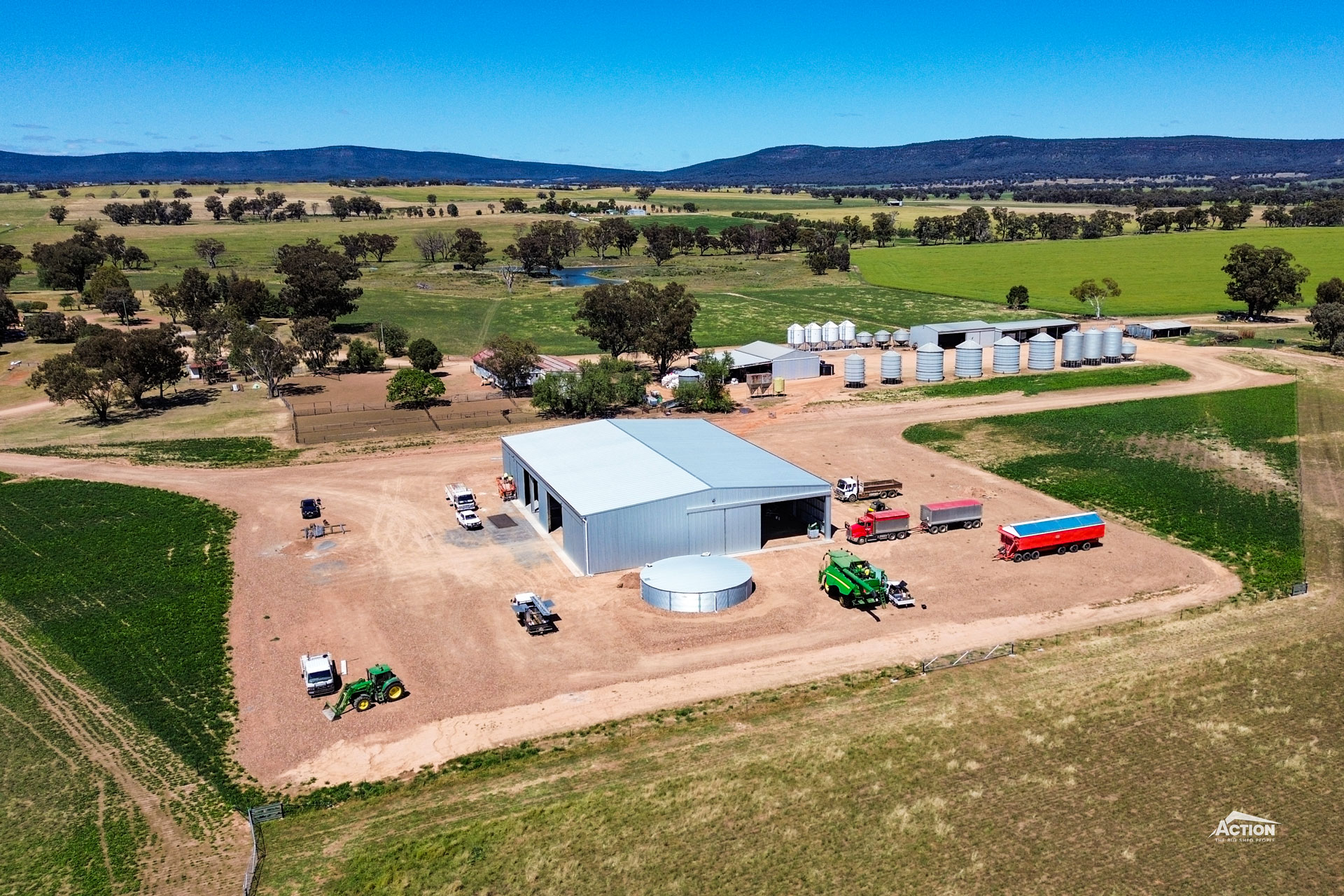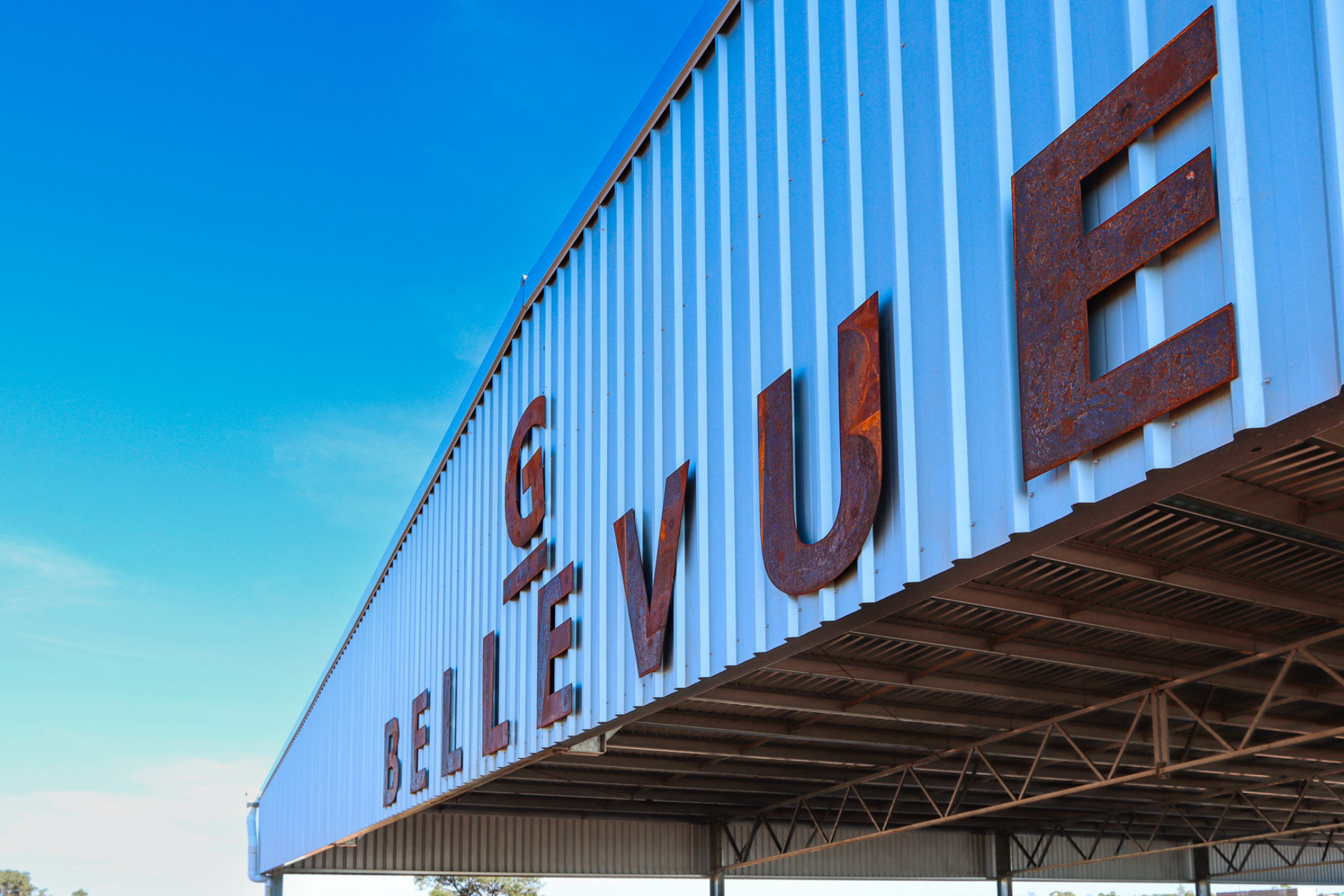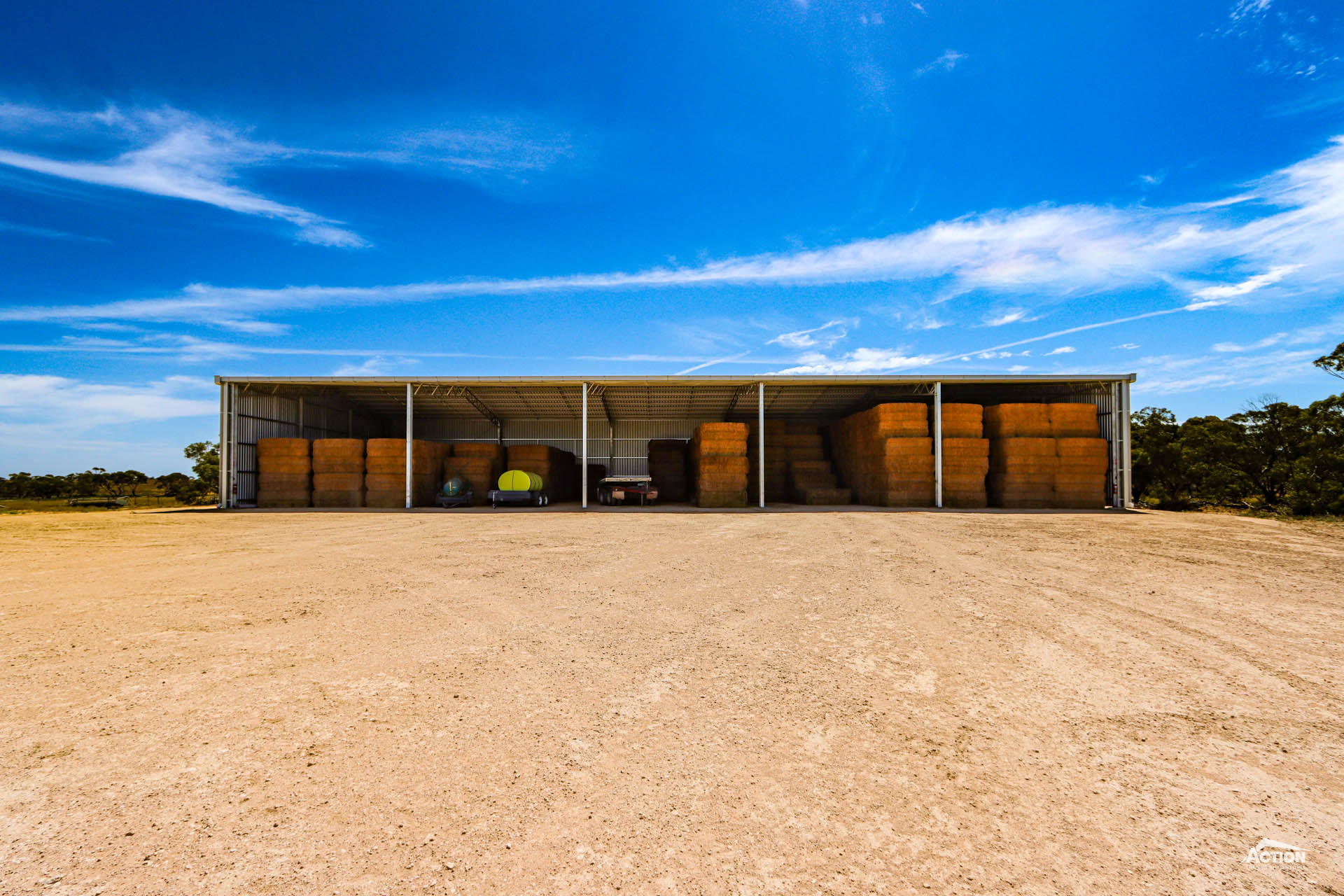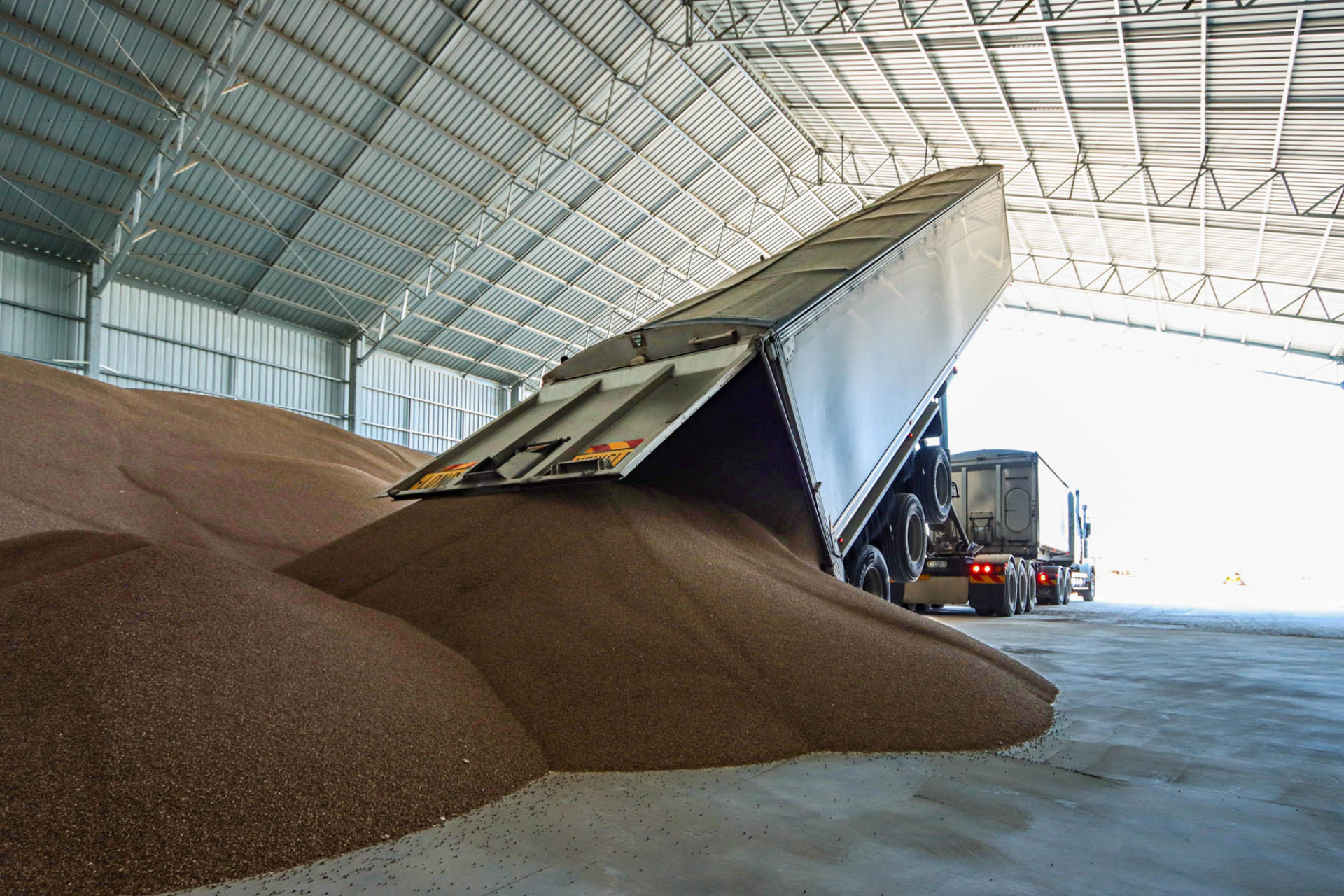Which direction should a barn face? What is the best loafing barn orientation?
Covered housing systems and barns such as loafing barns and feed pad covers are becoming popular infrastructure projects in the Australian dairy industry.
This popularity is due to the wide ranging and tangible benefits these structures can provide, from improved bedding and pasture management to increased milk production.
There are a number of details to address in the planning stage to ensure these housing systems and barns are successfully implemented.
This includes finding the ideal combination of effective airflow and weather protection.
While design features such as roof pitch, cantilevered canopies and ventilation systems can all contribute to this, it is important not to overlook the orientation of the barn and it’s a role in keeping cows comfortable.
Read on to learn all about best-practice loafing barn orientation, other considerations to keep in mind and useful resources such as pricing guides and airflow studies.
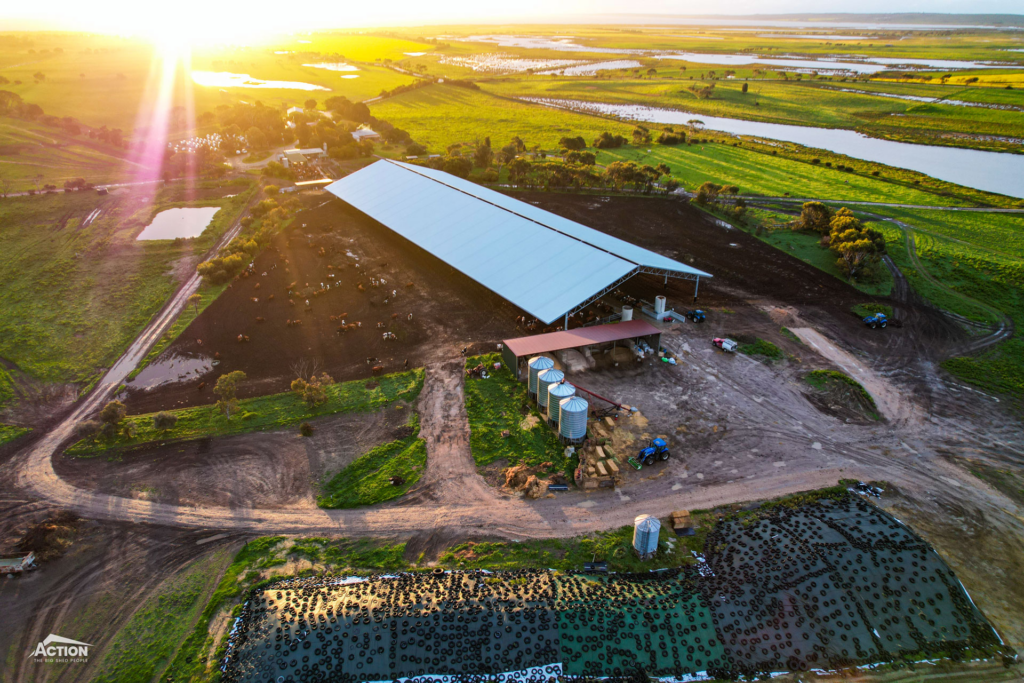
What Is The Best Loafing Barn Orientation?
For general farm sheds such as machinery sheds and hay sheds, we usually recommend that the shed faces east. There are some exceptions to this rule though and it largely depends on the site location, site conditions and the shed use.
When it comes to loafing barn orientation, an east-west orientation is largely considered best-practice.
East-west oriented loafing barns work well for several reasons.
Firstly, the east-west orientation allows you to take advantage of the prevailing winds for airflow, which is also known as “cross-ventilation”. This helps to keep the cows cool, the bedding dry and can reduce odours and ammonia build up.
The other advantage – more so in the summer months and in extreme heat events – is that the hot afternoon sun doesn’t shine directly into the shed, helping to prevent heat stress.
There are several variables though – which is why we recommend seeking project-specific advice – and we will discuss some of these next.
What Else Do You Need To Know?
Keeping cows cool and comfortable is arguably the number one priority of a loafing barn, benefits such as improved herd management and increased productivity and profitability will all flow on from this.
One of the most important reasons to select the best loafing barn orientation for your project is because of the impact this has on ventilation – and ventilation is the primary way to control temperature, humidity and odour.
Barn orientation doesn’t work in isolation though. There are other aspects to achieving effective ventilation in your barn.
These include:
- Site location. Is the site elevated? How exposed is the site to the prevailing weather? Is there existing infrastructure that will impede airflow?
- Barn configuration. Should you choose a narrower span to avoid hot air collecting in the centre of the barn?
- Barn height. Is there adequate height to allow the prevailing winds to flow through the barn?
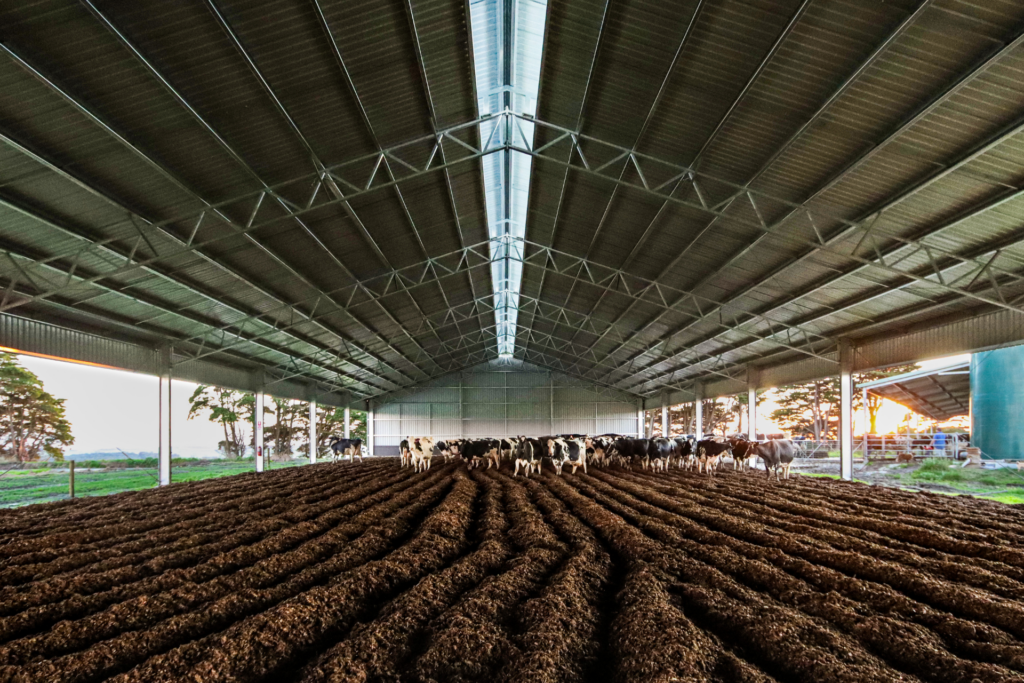
- Ridge ventilation system. Is there adequate ridge vent width for hot air to escape?
- Roof pitch. Does your barn design incorporate a steep roof pitch to improve air circulation?
- Artificial cooling systems. Do you need to install fans to improve air movement and cooling?
Having a good knowledge and understanding of these points for your project can help to create an effective loafing barn design.
Our project methodology takes into account these unique details (such as climate and site conditions i.e. wind direction and average daily temperatures) and uses Computational Fluid Dynamics Studies research to provide project-specific design advice.
This involves using design details such as ridge vent opening and roof pitch to achieve effective airflow.
Computational Fluid Dynamics Research For Effective Airflow
As we mention above, we have invested in developing a holistic project approach. This methodology uses research including Computational Fluid Dynamics studies to provide project-specific advice.
This includes advice on:
- Effective airflow for heat, moisture and ammonia reduction and how we can manipulate the roof design to achieve this.
- Functional and cost-effective configurations that satisfy stocking density and bunk space requirements.
- Best-fit orientation depending on location and climate.
- Developing stormwater design to direct run-off away from bedding and allow it to be captured and used.
Download the Covered Feedpads & Contained Housing Guide to learn more about our research and our work in the industry.
Learn About The Loafing Barn Project For Adam & Emma Pouw
“The design of the shed, I reckon, is absolutely fantastic. The cows flow in. The comfort … it’s like they’re coming in the middle of spring, they’re that comfortable, that happy.” – Adam Pouw
Read about the project in full, here.
Dairy Barn Inspiration Gallery
If you are still in the initial planning stage of your barn project, you might still be looking for ideas and inspiration – and this is the perfect place to start!
Browse the gallery below to view the latest barn projects – we hope these inspire your project!
Additional Resources
Here is a round-up of useful resources that provide more information on the loafing barn orientation, project cost and design consideration.
- Dairy Australia Contained Housing Guidelines (PDF Download)
- What Size Loafing Barn Do I Need?
- Curved Roof Versus Straight Roof
- Dairy Australia Loose Housing Case Study (PDF Download)
- How Much Does It Cost To Build A Loafing Barn?
We trust this article has given you a good understanding of the best loafing barn orientation! To read more articles like this, browse the latest here.
To discuss your dairy barn project and learn about industry work and research, please call us on 1800 687 888.

